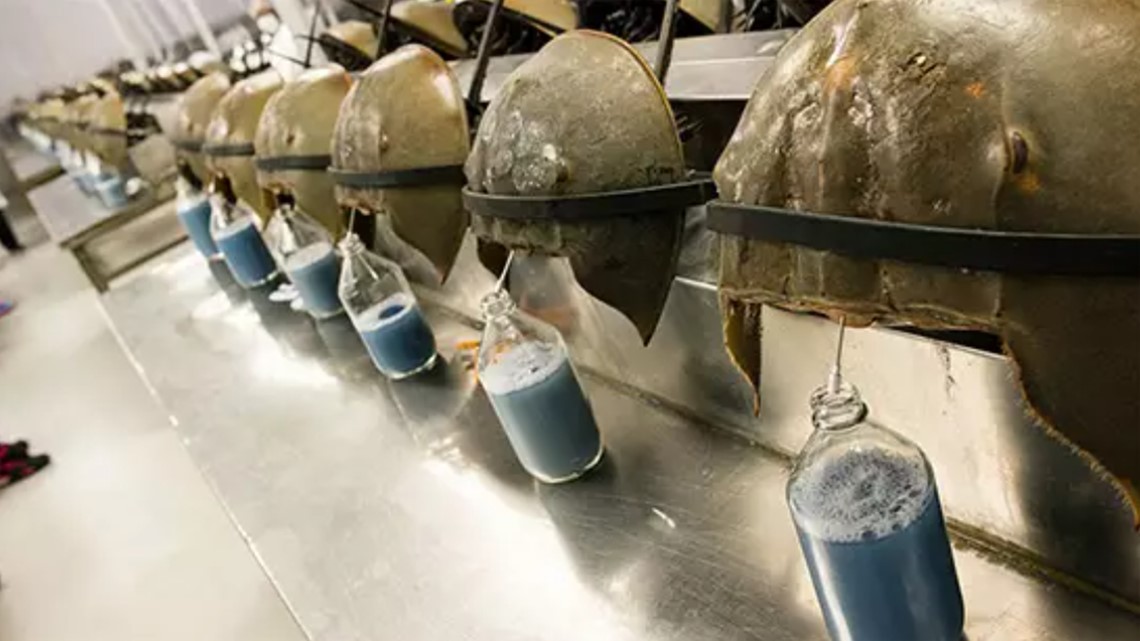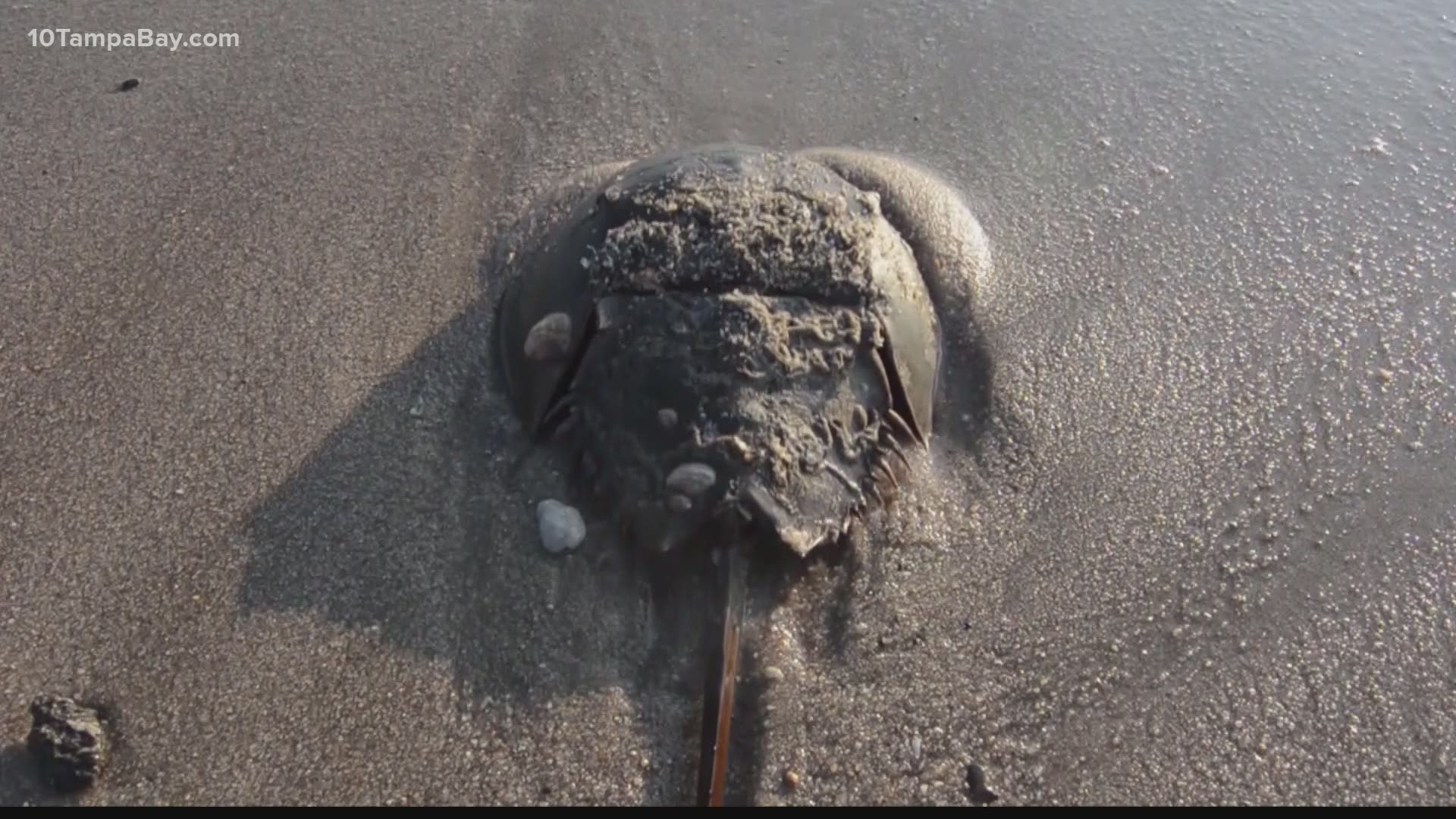TAMPA, Fla. — Don't be alarmed if you see two horseshoe crabs latching onto each other and walking toward the shore. It's just their ancient mating ritual.
Although horseshoe crabs mate year-round, March and April are some of their busiest months, according to the Florida Fish and Wildlife Conservation Commission.
Scientists say the best time to see them is within a few days of a new or full moon around high tide. And apparently, this St. Patrick's Day is especially lucky because scientists say the moon will appear at its fullest Thursday night.
Horseshoe crabs mate by pairing up, with the smaller male attaching to the larger female before the pair crawls up the beach, FWC says. When they reach the high tide line, the female digs a nest and lays her eggs while the attached male fertilizes them.
As the agency explains, reporting horseshoe crab sightings can give researchers valuable information about the species, including population, habitat use and nesting conditions.
Scientists consider horseshoe crabs "living fossils" because they've remained nearly unchanged for at least 445 million years — long before dinosaurs existed.
According to the FWC, the crustaceans are actually more closely related to spiders than they are to other crabs or lobsters.
Horseshoe crabs play an important part in both coastal ecosystems and the biomedical field. Researchers say an element in "their unique, copper-based blue blood" is used to test the sterility of medical equipment and vaccines.
FWC says research on the creatures has also led to a better understanding of human vision. They do have 10 eyes, after all.


If you see a horseshoe crab on its back, the FWC says you can help it by gently picking it up by the sides of the shell, turning it over and releasing it into the water. You should never pick up a horseshoe crab by its tail.

